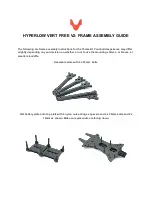
2 -2. OPERATION CONTROL CORD CONNEC-
TIONS
~
ELECTRIC SHOCK can kill.
•
Do not touch live electrical parts.
•
Shut down turntable, welding power source, and
robot control,
and disconnect input power
employing “lockout! tagging procedures” before
making or checking operation control cord con-
nections.
Lockout/tagging procedures consist of removing plug
from receptacle, padlocking line disconnect switch in
open position, removing fuses from fuse box, or shut-
ting off and red-tagging circuit breaker or other discon-
necting device.
Output Leads 31, 32, 33,
And 34 Connect To Terminals 175,
176, 177, And 178 Respectively
F~L~1
ELECTROSTATIC DISCHARGE (ESD) can damage
circuit board components.
•
Put on propedy grounded wrist strap BEFORE
handling circuit boards.
•
Transport all static-sensitive components in pro-
per static-shielding carriers or packages.
•
Perform work only at a static-safe work area.
Control of turntable operation for mounting plate rota-
tion, locking pin movement, and the Emergency Stop
function is provided by lead connections from the turn-
table control panel to Input/Output and Emergency
Stop terminals inside the MR-S Robot Control. The
location of the Robot Control terminal strips and ter-
minal designations are shown in Figures 2-3 and 2-4.
Be sure that all lead connections are correct and secure
to terminals on appropriate Robot Control terminal
strips (refer to circuit diagram Figure 4-25 for identifica-
tion of leads and connection points).
Input Leads 50, 51, And
52 Connect To Terminals
101, 140, And 141 Respectively
F-i--i
~
.±.
..L
~.
.1.
.J..
.L
.1..
.L.
~
‘
I
j6j6j6j6j~j~j6j~
~F
~T
~r
~T
~T
~T
~r~r
~f!T
~i
~
Input/Output Terminal Strip TB3
Jumper Lead
Connection From
Terminal 195
For Emergency Stop
Lead 30 For
24VAC Power
Supply Connects
To Terminal 194
K
Jumper Lead
Connection From
Terminal 174
For Emergency Stop
External Control Emergency
Stop Terminals
• ~L‘I I~L
LL uLN (ii
•1 !1IjdI~al~aI\~A
o•
-I--l--r--1----!--1-I
~
~
~ 2 ~
-~
~
——
~
Mli~
~4~
-
EUERGENC STOP
Emergency Stop And Function
Control Terminal Strip TB4
Terminals For
Additional
Start Modules
Figure 2
-
4. Operation Control Cord Lead Connections To Terminal Strips TB3 And TB4 Inside MR-S
Robot Control
SECTION 3- OPERATION
For the robot system to perform operations in the pro-
per sequence, it will be necessary to write and enter
programs and jobs that coordinate turntable functions
with weld programs.
This Section provides program and job examples that
control turntable operation, combine the turntable
operation with weld programs, and links the individual
programs together into a job for total robotic system
operation.
IMPORTANT:
The program and job data sequences
or steps shown in the examples can be used for actual
programs or jobs; however, some modification may be
necessary to provide different functions for specific
system applications (see Section 5
-
Teaching in the
robot Owner’s Manual for additional data information).
OM-890 Page 5









































